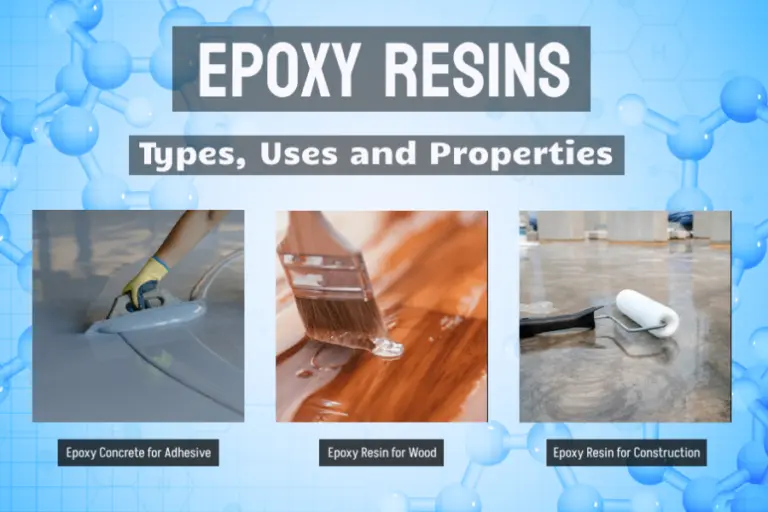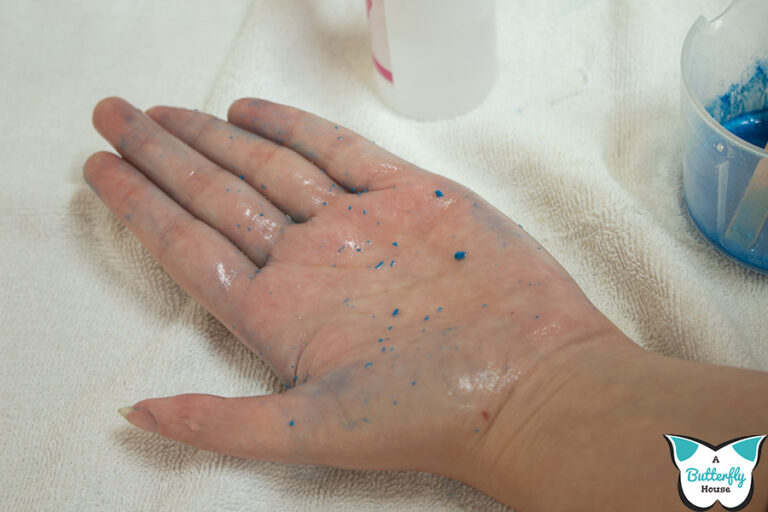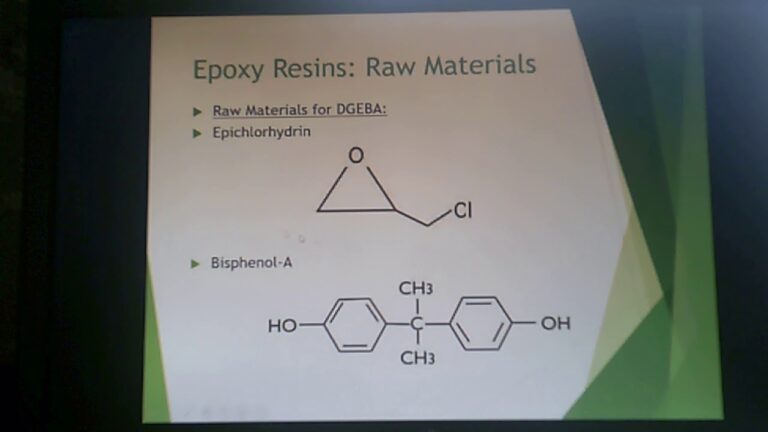What Dissolves Epoxy Resin: Effective Solvents
Removing Uncured Epoxy
When dealing with uncured epoxy, it’s crucial to act quickly. Uncured epoxy is much easier to remove than its hardened counterpart. Here’s how you can do it effectively.
Best Practices for Quick Removal
- Act Swiftly: The sooner you start removing the uncured epoxy, the easier it will be. Waiting too long allows the epoxy to start curing, making it more difficult to remove.
- Use a Scraper: Use a plastic scraper to gently lift and remove as much of the uncured epoxy as possible. Be careful not to damage the surface beneath.
- Wipe with a Cloth: After scraping, use a disposable cloth or paper towel to wipe the remaining epoxy residue.
- Apply Solvent: For any leftover residue, applying a solvent can help break down the epoxy.
Solvents for Softened Epoxy
Removing softened epoxy can be efficiently done using specific solvents. Here are some effective options:
| Solvent | Effectiveness | Application Notes |
|---|---|---|
| Vinegar | Moderate | Suitable for small clean-ups, may require more product. |
| Isopropyl Alcohol | High | Commonly available, effective at breaking down epoxy. |
| Denatured Alcohol | High | Effective and readily available in most hardware stores. |
| Acetone | Very High | Fast acting, use with proper ventilation. |
| Lacquer Thinner | Very High | Extremely effective, but use with caution due to strong fumes. |
| Ethyl Acetate | High | Powerful solvent, often used in labs. |
| Methyl Ethyl Ketone (MEK) | Very High | Highly effective, especially with ultrasonic agitation (PubMed). |
For additional details on solvents, see the list of what dissolves epoxy resin.
Consider using these products safely by working in a well-ventilated area and wearing appropriate protective gear. If you need further assistance with epoxy tasks, check out our guide on how to clean epoxy resin or how to remove epoxy resin from metal. You might also find tips on how to use epoxy resin helpful for future projects.
For more insight into epoxy handling and safety tips, explore sections like is epoxy resin toxic and how to get epoxy resin off hands.
Dissolving Hardened Epoxy
When it comes to dissolving hardened epoxy resin, understanding the right solvents and techniques is essential. This section will guide you on effective solvents and methods to safely remove hardened epoxy.
Effective Solvents for Hardened Epoxy
Ethyl acetate and methyl ethyl ketone (MEK) are some of the most effective solvents for dissolving epoxy resin-based materials. These solvents nearly match the dissolution capacity of chloroform and are highly efficient (PubMed).
Solvent Effectiveness
Here’s a table summarizing the effectiveness of different solvents:
| Solvents | Dissolution Ability |
|---|---|
| Ethyl Acetate | High |
| Methyl Ethyl Ketone(MEK) | Very High |
| Chloroform | Maximum |
Using ultrasonic agitation (UA) can enhance the dissolution process of these solvents, especially MEK, which shows excellent sealer dissolving ability in a short period.
Techniques for Safe Removal
For safe removal of hardened epoxy, consider using solvent-assisted transesterification (also known as alcoholysis), particularly in industrial settings. This process involves depolymerizing an anhydride-cured epoxy thermoset by selectively cleaving ester bonds in a 1,5,7-triazabicyclo[4,4,0]dec-5-ene (TBD)–alcohol solution at temperatures below 180 °C and ordinary pressure, achieving complete dissolution in less than two hours (Royal Society of Chemistry).
Safe Removal Techniques
- Solvent Selection: Use ethyl acetate or MEK as preferred for their efficacy.
- Ultrasonic Agitation: Enhances solvent action, shortening dissolution time.
- Transesterification Method: Involves depolymerization in an organic catalyst-alcohol solution, leading to quick and efficient dissolution of epoxy resin.
- Temperature Control: Ensure temperatures stay below 180 °C to maintain safety and efficiency.
- Protection: Always wear protective gear to avoid skin contact. For more on how to handle epoxy safely, see how to get epoxy resin off hands.
For detailed guidelines on removing epoxy, refer to how to remove epoxy resin. By employing these safety measures and understanding solvent effectiveness, you can achieve a smooth and safe epoxy resin removal process.
Epoxy Resin Durability
When considering what dissolves epoxy resin, understanding its durability is essential. The resilience of epoxy resin against common solvents and its overall benefits make it a popular choice for various applications.
Resistance to Common Solvents
Epoxy resin is known for its high resistance to many solvents used in everyday settings. This durability ensures that your epoxy-coated surfaces remain intact and damage-free for longer periods. Common solvents that epoxy resin resists include:
- Acetone
- Ammonia-based window cleaners
- Bleach
- Oils and greases from food preparation
- Salt compounds
| Solvent | Resistance Level |
|---|---|
| Acetone | High |
| Ammonia | High |
| Bleach | High |
| Oils/Greases | High |
| Salt Compounds | High |
Epoxy resin’s resilience to these solvents makes it a perfect choice for environments exposed to such chemicals. It performs exceptionally well under conditions where other finishes might fail.
Benefits of Epoxy’s Resilience
The robust nature of epoxy resin offers several notable advantages, particularly for home renovators looking to create durable, long-lasting surfaces:
-
Waterproof Protection: Epoxy resin forms an impermeable layer that provides crystal-clear protection to the underlying material. This makes it an excellent choice for countertops, tabletops, and other surfaces that are exposed to water.
-
Easy Maintenance: The non-porous surface of epoxy resin resists stains and makes it easy to clean away spills and messes, especially from oils and greases. This is particularly beneficial in kitchen environments (Best Bar Top Epoxy).
-
Longevity: Premium epoxy resins can endure significant wear and tear for at least seven years without major upkeep. Renewing the coating only requires light sanding and reapplying a fresh layer, ensuring that surfaces maintain their aesthetic appeal (Best Bar Top Epoxy).
-
Salt Resistance: Epoxy’s high resistance to salt compounds makes it an ideal coating for watercraft and other objects exposed to high salinity environments, such as saltwater lakes and oceans (Best Bar Top Epoxy).
These benefits highlight why epoxy resin is prized for applications requiring high durability. To learn more about the benefits and applications of epoxy resin, check out our articles on how to use epoxy resin and what is epoxy resin.
Industrial Epoxy Dissolution
Industrial epoxy dissolution processes often require specialized methods to efficiently break down the tough, resistant bonds of epoxy resin. Understanding the different techniques can help you choose the best approach for your specific needs.
Efficient Solvent-Assisted Transesterification
One effective method for dissolving industrial-grade epoxy thermosets is solvent-assisted transesterification (or alcoholysis). This method involves breaking down the epoxy resin using a combination of organic catalysts and alcohol solutions.
According to the Royal Society of Chemistry, an anhydride-cured epoxy thermoset can be depolymerized by selective ester bond cleavage in a solution of 1,5,7-triazabicyclo[4,4,0]dec-5-ene (TBD) mixed with alcohol. This process can occur under mild conditions, below 180°C, and at ordinary pressure, achieving complete dissolution in less than two hours.
A key advantage of this method is its efficiency. The reaction between the ester bond and alcohol, facilitated by the organic catalyst, results in rapid transesterification, making the epoxy resin dissolve quickly and effectively.
Here’s a breakdown of the process:
| Step | Description |
|---|---|
| Catalyst | TBD (1,5,7-triazabicyclo[4,4,0]dec-5-ene) |
| Solvent | Alcohol solution |
| Temperature | Below 180°C |
| Duration | Less than 2 hours |
| Pressure | Ordinary |
Factors Affecting Epoxy Dissolution
Several factors can influence the effectiveness of epoxy dissolution via solvent-assisted transesterification. Understanding these factors can help you optimize the process for better results.
-
Type of Alcohol: Different alcohols have varying diffusivity and solubility. Alcohols with higher diffusivity and solubility can lead to faster dissolution rates. For example, methanol and ethanol are often more efficient compared to larger alcohol molecules.
-
Temperature: The temperature at which the dissolution occurs can significantly impact the reaction. Higher temperatures generally accelerate the process, but it’s important to stay below the recommended maximum to avoid unsafe conditions or incomplete reactions.
-
Alcohol/Catalyst Concentration: The concentration of the alcohol and catalyst in the solution is crucial. Higher concentrations typically result in faster dissolution, as they increase the rate of the transesterification reaction.
-
Epoxy Composition: The specific formulation of the epoxy resin, such as the presence of additives or fillers, can affect its resistance to dissolution. Tailoring the solvent and conditions to the specific epoxy can improve efficiency.
To explore more about how to remove epoxy resin from various surfaces, check our detailed guide for home renovators.
Combining this industrial-grade method with an understanding of essential factors ensures efficient and safe epoxy resin dissolution. This knowledge is particularly useful for large-scale projects or situations where precision and speed are essential. For further insights on epoxy resilience and maintenance, you can review our article on epoxy resin durability.
Safety Tips for Handling Epoxy
When working with epoxy, it’s crucial to safeguard your health by taking appropriate precautions. Below are some essential safety tips to help you handle epoxy resin effectively and safely.
Preventing Skin Contact
One of the main safety considerations when dealing with epoxy is protecting your skin. Direct contact with epoxy, particularly with hardeners, can lead to moderate chemical burns and significant irritation. Here are some best practices to avoid skin contact:
- Wear Protective Gear: Always wear gloves, long sleeves, and protective eyewear to minimize exposure. Nitrile gloves are preferred over latex gloves for better chemical resistance.
- Use Barrier Creams: Apply a barrier cream on exposed skin areas as an extra layer of protection against accidental spills.
- Clean Up Spills Immediately: If you spill epoxy on your skin, wash it off right away using soap and water. Use a waterless hand cleaner if soap and water are unavailable. For more details, visit how to get epoxy resin off hands.
- Work on Disposable Surfaces: When mixing or applying epoxy, use disposable materials or protective coverings to avoid staining and accidental skin contact.
Avoiding Inhalation Risks
Inhaling epoxy vapors can lead to respiratory issues, including irritation and sensitization. Proper ventilation and respiratory protection are essential to avoid inhalation risks:
- Work in Ventilated Areas: Always use epoxy in well-ventilated spaces to reduce the concentration of fumes. Consider using exhaust fans or working outdoors whenever possible.
- Wear Respiratory Protection: Use a respirator with organic vapor cartridges to protect your lungs, especially during mixing, curing, and sanding tasks.
- Avoid Spraying Epoxy: Spraying epoxy can lead to severe lung damage and skin sensitization. If spraying is necessary, it should be done in a well-ventilated and filtered spray booth with an air-supplied respirator and full-body protective clothing (Entropy Resins).
- Monitor Exposure: Be aware of any symptoms of overexposure, such as headaches, dizziness, or respiratory discomfort, and take immediate action to mitigate exposure risks.
Properly following these safety tips will help you manage the risks associated with what dissolves epoxy resin while ensuring a safe and efficient work environment. For more comprehensive guidance, check our articles on is epoxy resin toxic and how to use epoxy resin.
Health Risks of Epoxy Exposure
Epoxy resin is a versatile material commonly used in home renovation projects. However, if not handled properly, it poses health risks. Understanding these risks is crucial for your safety.
Dangers of Skin Absorption
Epoxy resin and hardeners are most likely to be absorbed through the skin when they are in liquid form. Direct contact can lead to irritation, rashes, and in severe cases, chemical burns (Entropy Resins). This is especially true for hardeners, which can cause moderate burns upon skin contact.
| Risk | Description |
|---|---|
| Irritation | Redness and itching |
| Rashes | Raised or inflamed skin |
| Burns | Moderate chemical burns from hardeners |
To prevent skin absorption, always wear protective gloves and long sleeves. Avoid touching your face or other exposed skin areas while working with epoxy and hardeners. If any epoxy gets on your skin, clean it immediately. For detailed advice on how to remove epoxy resin from hands, refer to our specialized guide.
Respiratory Hazard Precautions
Inhaling epoxy vapors can irritate your respiratory tract and lungs. This is particularly hazardous when working in poorly ventilated areas or when sanding partially cured epoxy, as the airborne dust may contain unreacted hazardous components.
| Risk | Description |
|---|---|
| Irritation | Throat and airway discomfort |
| Sensitization | Heightened allergic reactions over time |
| Lung Damage | Chronic exposure to high concentrations of vapors |
To minimize these risks, always work in well-ventilated areas and wear a suitable mask. For situations involving higher exposure risks, such as spraying epoxy, the use of an air-supplied respirator and full-body protective clothing is recommended (Entropy Resins).
For more tips and detailed guidelines, visit our article on how to use epoxy resin.







